Like the title says, this is a story within a story. It’s about using primer pickup tubes with my resurrected Star reloader, and how Lady Luck smiled on me yet again.
First, a bit of background. There are a few approaches in the reloading world for transferring primers from the primer box into the reloader. In our general series on reloading, I showed how to use the Lee primer tool, which is what I generally use when I’m loading on a single stage press like my RCBS Rockchucker
. Another approach is to use a primer pickup tube
and a primer tray
. See, the deal is that you don’t want to touch the primers with your bare fingers. You might get skin oils on the primer, and that could make the primer inert. As explained earlier, in this game, you want all the primers to be “ert.”
The first step is to transfer primers from the box they come in into a primer tray, like you see below.

That green circular deal on the left in the photo above is the primer tray. It consists of a base and a lid. You take the lid off and drop the primers into the base, like you see below.
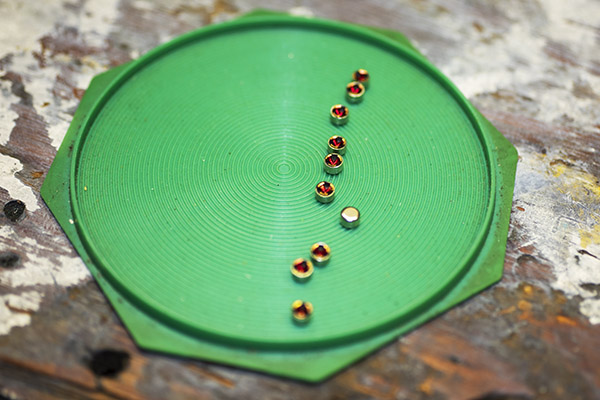
When you do that, though, invariably some of the primers will face up and some will face down. We want them all facing down in the tray’s base, and we get that by jiggling the base. There are little circumferential ridges molded into the base, and when you jiggle the tray, it makes all the primers face down (see below).

Get ready for more cleverness here, folks. What we do next is put the lid back on the primer tray, invert it, and then remove the base from the lid. That leaves us with the lid, and all the primers in it are facing up (see below).
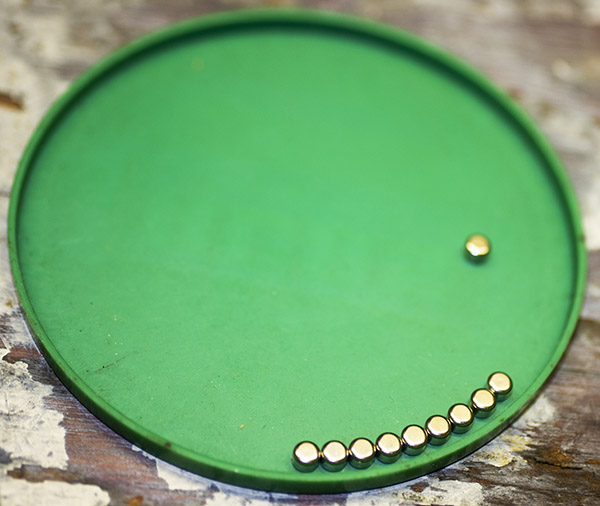
At this point, we pick up the primers from the tray using a primer pickup tube like you see in the photo below.

The tube you see in the photo above is an RCBS primer pickup tube. It’s a hollow tube with a spring catch on one end and a spring clip on the other. What you do is take that tube and push it down (spring end down) on top of each primer. That stacks the primers, one on top of the other, in the tube. Then you invert it over the primer magazine on the Star reloader, remove the spring clip, and all the primers in the pickup tube drop into the Star’s primer magazine.
Star reloaders originally had a brass primer pickup tube, but that didn’t come with the one I have. I’m not complaining; my Star reloader was free. And I figured I’d just use an RCBS primer pickup tube, because I knew had three or four of those stashed away somewhere. But I couldn’t find the things. Then I remembered I had put a bunch of reloading odds and ends in a 50 cal ammo can somewhere, and I went through maybe 10 ammo cans before I found it. I used the RCBS primer pickup tube and I had to hold it carefully in alignment with the Star’s primer magazine when transferring the primers from the inverted tube, pulling the pin, and letting the primers fall into the Star brass primer magazine. It worked just fine. It wasn’t the original Star gear, but hey, you go to war with the Army you have.
After I did that, I went on to other things. I thought I was doing pretty good, you know, finding those RCBS primer pickup tubes, but the box they were in kept playing over and over again in my mind. Something was tickling the neurons, but I didn’t know what it was. Then it hit me. I remembered earlier in the day when I took the RCBS primer pickup tube out of the box. I could see it clearly in my mind:
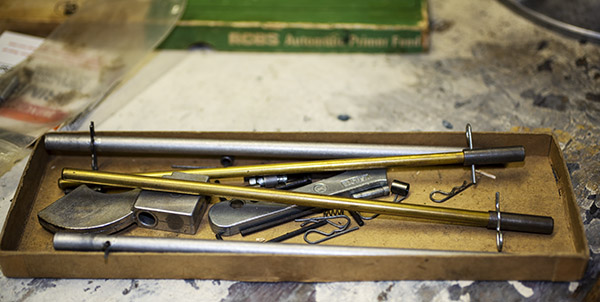
There were two other brass primer pickup tubes in that box. In my eagerness to get the RCBS primer pickup tubes (the ones I was looking for), I reached right over the brass tubes. Could it be? I put that stuff away a decade ago, way before I ever had the Star.
I went back to that box immediately, and son of a gun, there were not one, but two Star original brass primer pickup tubes. Two! I think they came from Sue’s Dad before he passed away more than 10 years ago (he was a reloader, too), and I got a lot of his old bits and pieces. He never had a Star reloader that I ever saw, but he must have latched onto these two primer pickup tubes somewhere along his journey through life. How about that?
So, back to the story du jour…and more of the Star folks’ cleverness. Star used a slightly different approach than did RCBS. For starters, they made a cross cut in the pickup end of their primer pickup tubes to give the spring tension needed to hold the primers in the tube.
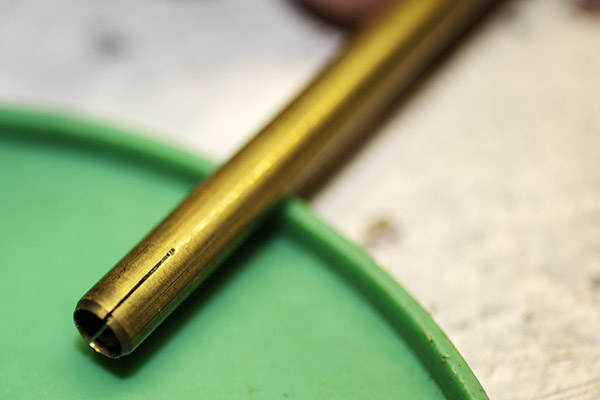
I started picking up a batch of primers from the primer tray lid with my newly-discovered Star primer pickup tube.

When you get that last one, you push it the rest of the way in with a probe (not your finger). With apologies in advance for the inadequate photo depth-of-field, here’s what the last primer looks like in the Star tube.
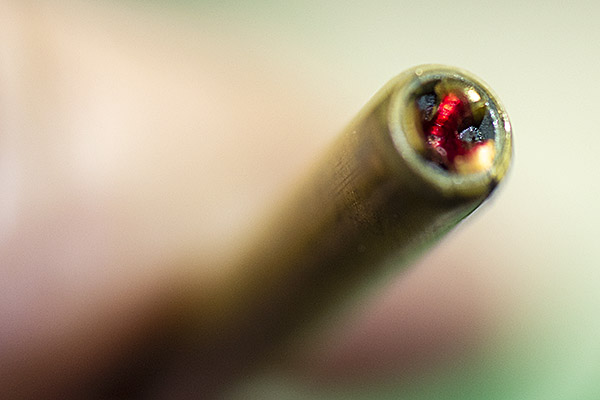
Then you invert the tube, so all the primers are at the other end. The spring clip keeps them from falling out. There’s a flange on the end of the Star primer pickup tube. It interfaces with the Star reloader’s primer magazine to keep the primer pickup tube aligned with the primer magazine tube.

Here’s the top end of the Star reloader’s primer magazine, with the primer follower in place. I removed it and placed the primer pickup tube on top.
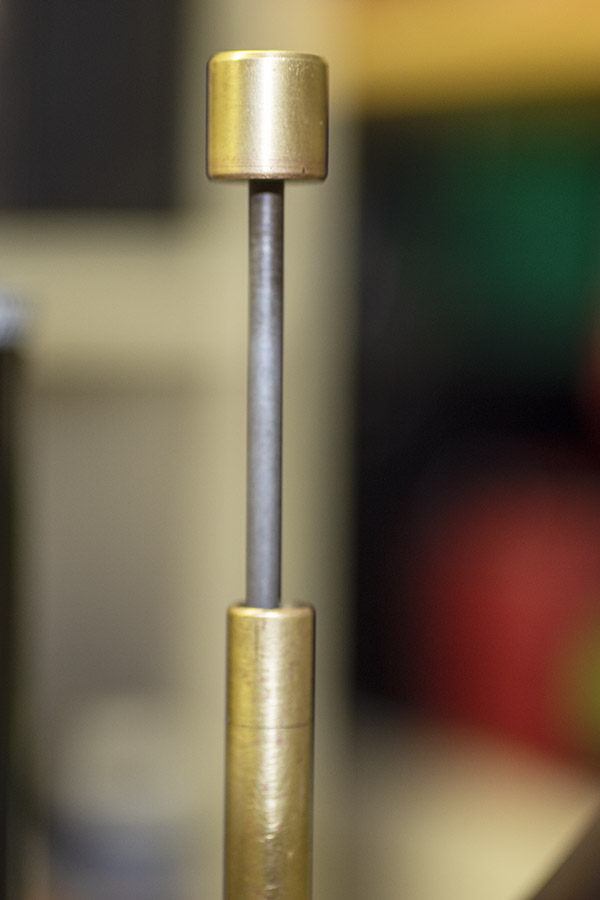
At this point, I then removed the spring clip, and all the primers that were in the primer pickup tube transferred (gravity feed!) into the primer magazine.

So there you have it. The Star is up and running, and I’ll post about cleaning up a few more details on this magnificent old machine in the next Star blog. Stay tuned!
More cool reloading stuff is here!
Read the rest of the Star reloader resurrection here!
Sign up for email notifications when we post future blogs here:

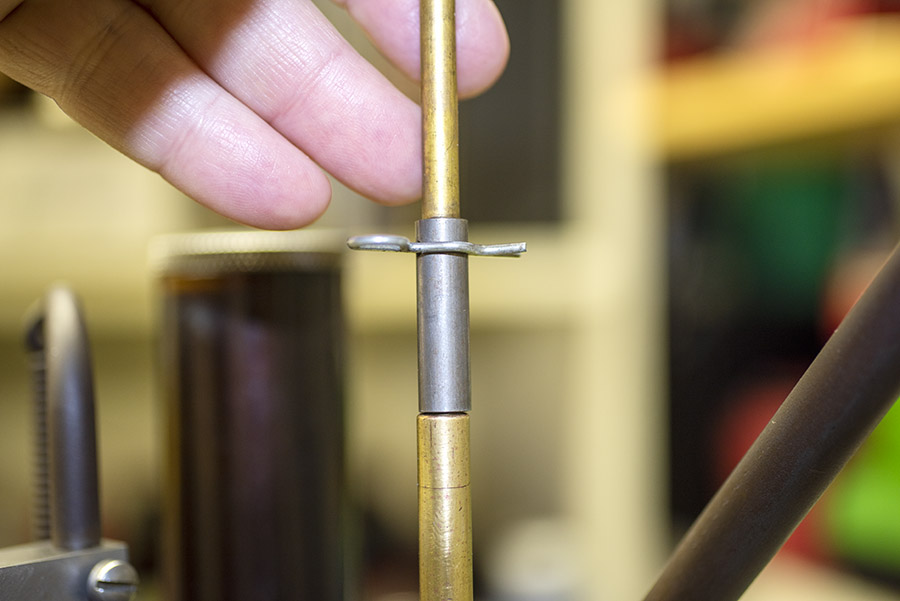
Some cosmic something-or-others surely lined up for you with this whole Star deal. A lot of fun following along.
I think you are correct, Larry.
Dumb question for you Joe but what’s all the colorful stuff showing on the last primer you put in?
You still hiding Halloween candy from the grand kids?
I’ve never reloaded ammo so is that the primer powder bang stuff?
Or various collectables from the lint on your loading table ?
rookies want to learn 🙂
Rob, in general, the primer mix consists of lead styphnate, antimony sulfide, barium nitrate, and other stuff. It’s sensitive to impact and to a degree, to crushing, shock, and heat, so when the firing pin strikes the primer cup and dents it, this mix is trapped between the primer cup and the anvil. It ignites, and that’s what ignites the propellant in the case. Primers are a lot more sensitive than propellant, and a lot more dangerous if enough of them go off. It’s why the suppliers package them in little trays like you see in this blog’s photos, so if one of them ignites, they don’t all go off. My Dad knew a guy who had a bunch of shotgun shell primers in a tin cup (why he did that, I’ll never know), and he had that cup near a grinder on his work bench. You can guess where this story is going. A red-hot bit of steel from from the grinder lit the cup off and the guy lost a hand. In the munitions world, anything that involves working with the first device in an explosive train (usually referred to as a detonator or initiator) is inherently more dangerous than working with the main charges. They’re all dangerous substances, but the initiator/detonator is inherently more so. The flare industry is another one that is a frequent source of horror stories.
So, that primer answer above is for percussion primers, as small arms use. When I was on the 20mm Vulcan in the Army, those rounds’ primers were electrically initiated. The Vulcan cannon provided electrical energy to start the fun in each round, and that had its own set of safety issues. Static electricity could light off a Vulcan round. All the tools you use around that system are beryllium copper (non sparking). Interesting stuff.